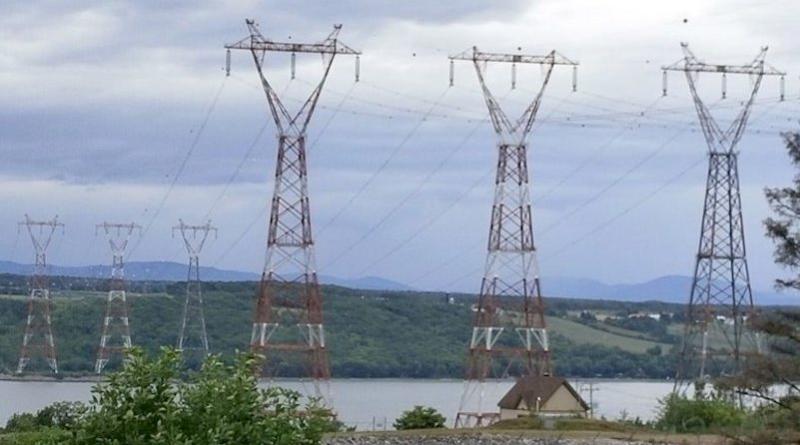Mixed Reviews for Quebec Net-Zero Plan as Experts Cite Demand Reduction Challenges

Hydro-Québec is getting credit for opening a conversation about the province’s energy future, but not for presenting the most affordable path to net-zero emissions, as experts dig into the details of the 2035 action plan the provincial utility released last week.
On Thursday, Hydro announced it would invest up to C$185 billion and build 8 to 9 gigawatts of new grid capacity, including 3,800 to 4,200 megawatts of new hydroelectric generation, to meet a predicted doubling of electricity demand by 2050. Now, analysts are debating whether the utility’s massive targets are achievable, how the plan could put more emphasis on energy efficiency and behind-the-meter renewables, and whether it’s realistic to offer stable, affordable power rates alongside such a massive buildout of new infrastructure.
“No, it’s not realistic at all. It’s part of the political constraint that Hydro-Québec (HQ) has to work under,” Pierre-Olivier Pineau, an energy policy specialist at HEC Montréal, said in an email. “It seems that people, and it’s not unique to Quebec, like to think that public services and infrastructure can be improved at no cost by the government, and that taxes (or rates) can always stay low or be lowered with no consequences.”
And the utility’s sole shareholder, the provincial government, is reluctant to open a public dialogue on electricity rates, he added.
An Honest Picture
But even with that gap, “the plan is still the most honest one HQ has released in [recent] years,” Pineau wrote. “It clearly says there have to be large investments if we want to decarbonize,” and “emphasizes like nowhere else the need for HQ to communicate with various stakeholders (First Nations, governments, industry groups, customers) to change things and create more social acceptability.”
Normand Mousseau, professor of physics at l’Université de Montréal and scientific director at the Trottier Energy Institute at Polytechnique Montréal, agreed that Hydro-Québec “is the first utility in Canada to say this is what we need to meet our objective, this is what we need to invest, and this is where we’re going. And that’s refreshing.”
The plan seems to recognize that “what’s feasible and what’s not is pretty much a matter of how you construct reality,” he said. “Unless we say this is where we want to go, we’ll never get there.” The utility is making it clear that net-zero “requires a major reorganization and a major concentration of effort,” with $16 billion in annual investment and 35,000 new staff to be hired and trained.
“So it’s not something that will happen magically. Unless you design it, it has zero chance of happening.”
While not all the details of that work are in the published plan, Mousseau added, “it’s clear that they understand they can’t do things the way they’ve been. They have to see major productivity improvements, otherwise it’s not possible.” That means “better contracts, reviewing regulations, reworking rules, reviewing how the construction business is working, and maybe delivering new technologies. So there’s a lot that has to happen.”
At the same time, of the three new hydroelectric plants built in Canada over the last year, Hydro-Québec’s La Romaine complex was the only one that came in on time and on budget, he said. (The other two were Site C in British Columbia and Muskrat Falls in Labrador, neither of which ended well.) “So at least we have a utility that knows how to run big projects. Now they’ll have to double down.”
But Mark Winfield, co-chair of York University’s Sustainable Energy Initiative, said the plan “looks like a return to supply planning in the 1970s”. He contrasted Quebec’s approach with an emerging strategy in Manitoba that he said relies too heavily on natural gas, but calls for “incremental additions to capacity” while “recognizing the scale of the uncertainties going forward and thinking about how to manage them.”
The More Expensive Option
Pineau said the new hydropower capacity that Hydro-Québec is proposing won’t be the most cost-competitive option for the province’s grid—but an alternative path would require much greater public buy-in.
“The short answer is probably no, there is nothing cost-competitive in terms of new hydro,” he wrote. But the utility is being much more clear in this plan that it will need the additional capacity to manage peak power demand.
With more flexibility from energy storage, interties with other provinces and states, energy efficiency, and consumer willingness to adjust demand, “new dams may be completely avoidable,” Pineau added.
But “since power consumers are trained, particularly in Quebec, to be inflexible and expect reliable, low-cost power with no behavioural change, ‘cost-effectiveness’ starts to be less and less relevant,” he said. “It’s politically extremely hard to ask anything from residential power consumers—especially to ask them to see the true cost of power. Given that context, new hydropower could not be entirely excluded.”
Mousseau said it doesn’t make sense for Quebec to pretend that electricity rates won’t increase, in a plan that promises to index power rates to inflation with a maximum cap of 3% per year. It would be far better, he said, to prepare consumers for a higher price per kilowatt-hour, while making it clear that major efficiency gains in the shift from fuels to electricity will save them money in the end.
“We’re talking about huge investments here, and you cannot just raise rates on a few sectors and ignore residential (bills) and think that will fly,” he said. “Politically, it’s untenable.”
Planning for Peak Power Demand
Mousseau agreed that peak power demand was the central influence on Hydro-Québec’s planning. New renewable energy supplies are easy enough to bring online, he explained, but meeting 45 gigawatts of peak demand in February—compared to much more modest requirements at other times of year—is a bigger challenge, and one that Quebec will have to meet in the years ahead without importing power from elsewhere.
“We won’t be able to count on our neighbours anymore because everyone is electrifying their heating, which means everyone will have peak demand at roughly the same time,” he said. “So that’s really the major issue.”
Mousseau also questioned whether the cost of competing renewable energy technologies will fall as fast in the years ahead as many analysts predict. “we’re not the only ones in the world who will be ordering wind turbines,” he said. So while energy modellers and analysts often failed to anticipate dramatic reductions in clean energy costs in recent times, “I think they’re overestimating the price drops over the next few years.”
But Pineau said the new capacity will cost more than storage, energy efficiency, or demand response, and even a 14- or 15-year timeline to build the new capacity “would be optimistic given the level of cost, complexity, and opposition that any new hydropower project would entail.”
Mousseau countered that the labour force requirements in the utility’s plan will sap the pool of potential workers available for a mass energy retrofit program, do that the province’s efficiency gains will have to come from best available technologies like heat pumps and electric vehicles. He also suggested the new plan over-estimates the potential for energy efficiency, citing recent research from the United Kingdom and Germany.`
But ultimately, the pressure to decarbonize is facing utilities everywhere, Mousseau said, and with 40% of the province’s energy demand already met by electricity, Quebec is well ahead of most other North American jurisdictions.
“You talk to companies, and the pressure to decarbonize is the same everywhere,” he said, from Quebec to Alberta to Houston, Texas. “People will want to do something. And the utility can only lag so far behind that pressure before the politicians get the message.”
Meanwhile, amid concerns that the 2035 plan opens the door to new nuclear facilities in the province, Le Journal de Montréal says Hydro-Québec CEO Michael Sabia is proceeding with caution. “Nuclear is not part of this plan, period,” Sabia declared, after releasing a document that cites a new nuclear plant at the Gentilly complex near Trois-Rivières as a possibility.
But newly-rebranded Quebec-based multinational AtkinsRéalis, formerly the scandal-plagued SNC Lavalin, is much more keen. “We must produce more nuclear energy, not reduce it,” the company says on its website.






